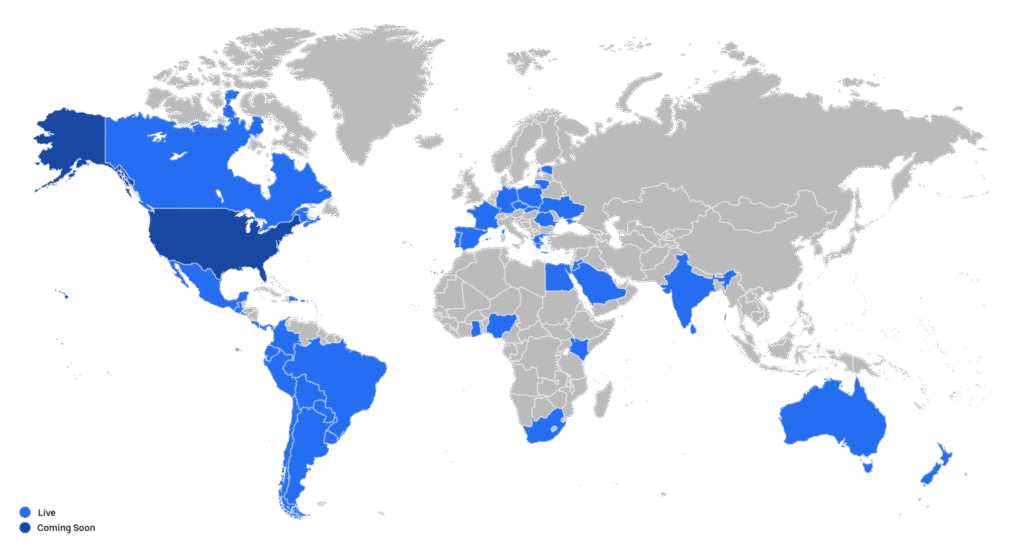By Gina Hill | October 2025
Uber is testing a bold new way to make ride-sharing feel safer for women, a feature that allows women riders to request women drivers, and women drivers to choose to pick up only women. The Women Preferences pilot, now active in Los Angeles, San Francisco, and Detroit, is the first time Uber has offered gender-based matching in the United States.
The company says the idea was born directly from user feedback: both women drivers and riders wanted more control over who they share a car with, especially at night or in unfamiliar areas. It’s a simple toggle in the app, but one that carries big implications for safety, equality, and Uber’s global business model.
Why Uber Introduced It
“Women riders and drivers have told us they want the option to be matched with other women on trips,” said Camiel Irving, Uber’s vice president for U.S. and Canada operations. “We’re introducing new ways to give them more control.”
(Uber Newsroom)
Globally, women make up only about 20% of Uber’s driver base. The company hopes this feature will encourage more women to sign up or work later hours, knowing they can choose their riders. Similar programs, such as Uber Moto Women in India, have already proven popular, particularly in markets where women’s mobility can be restricted by safety concerns.
Where It’s Available
As of fall 2025, the Women Preferences feature is live in three U.S. cities:
- Los Angeles, California
- San Francisco, California
- Detroit, Michigan
These pilot sites were chosen for their diverse rider bases and active safety initiatives.
(NBC Los Angeles)

Outside the U.S., Uber says some version of women-to-women matching is already available in about 40 countries, including India, Brazil, Egypt, Saudi Arabia, and Canada. Early tests in France and Germany helped Uber refine the system before bringing it stateside.
Is It Safer for Women Drivers?
For many female drivers, the change feels empowering. They can finally take late-night trips or work in areas they might otherwise avoid.
“Knowing I’m likely to pick up another woman makes me more comfortable driving after 10 p.m.,” said a Detroit driver quoted in early coverage of the pilot. “It’s not the fix, but it’s a start.”
Still, safety experts caution that while it reduces exposure to certain risks, it’s not a cure-all. Assaults, robberies, and harassment remain possible, and Uber continues to face lawsuits and criticism over its broader safety record. The feature is a mitigation, not a solution, part of a wider patchwork of safety tools like 911 assistance buttons, live ride-tracking, and background checks.
Public Response and Trade-Offs
The public reaction has been largely positive, especially among women riders. Many call the move “long overdue,” praising Uber for giving users a choice.
But as with most new tech policies, trade-offs are real:
| Pros | Cons |
|---|---|
| Greater comfort and control for women riders and drivers. | Longer wait times in cities with few female drivers. |
| May encourage more women to become drivers. | Excludes or complicates matching for nonbinary users. |
| Seen as a meaningful gesture toward safety. | Raises legal and regulatory questions about gender-based matching. |
In some markets, legal experts note that gender-specific options could face challenges under anti-discrimination laws, though Uber’s opt-in design helps it stay compliant.
Can It Work Long Term?
Short term, yes. The feature is operationally viable as a pilot: users can toggle it on or off, and Uber can collect valuable data on demand patterns and safety outcomes. But scaling the feature nationally or globally brings hurdles:
- Supply imbalance: In most cities, women are a small minority of Uber drivers, leading to longer waits and canceled rides.
- Legal uncertainty: Gender-based matching may be contested in some jurisdictions.
- Inclusion gaps: Nonbinary and gender-nonconforming users are not yet fully supported.
- Economic trade-offs: Gender segmentation can hurt efficiency unless Uber incentivizes female drivers.
A UCLA Anderson Review study notes that “gender-based ride-matching, while socially appealing, can reduce utilization rates unless balanced by incentives or higher supply.”
Uber’s Challenge Ahead
Uber says this isn’t a publicity move. It’s part of a broader push to make ride-sharing safer and more inclusive. Future updates may expand the pilot to other large cities, depending on early results from Los Angeles, San Francisco, and Detroit.
To make the program sustainable, analysts suggest Uber will need to:
- Incentivize women drivers through bonuses or recruitment campaigns.
- Improve transparency about safety metrics and wait times.
- Clarify inclusion policies for nonbinary users.
- Pair the feature with continued investment in overall safety — not just gender segmentation.
As one transportation safety expert told Axios, “Uber can’t solve safety with filters alone. But giving women more agency is a smart first step.”
Bottom Line
Uber’s Women Preferences feature is a promising, if imperfect, move toward safer ride-sharing. For many women, it’s about dignity and control: the ability to choose who you share your ride with. For Uber, it’s a balancing act between safety, equity, and operational reality.
Its success will depend not only on matching algorithms, but on whether the company truly commits to building a safer platform for all.
🔗 More Information and Official Resources
Official Uber Links
- Uber Women Rider Preference Help Center
- Uber Newsroom: Women Preferences Announcement
- Uber Safety Hub
- Uber U.S. Safety Report
Media & Expert Coverage
- Washington Post – “Uber’s New Women Driver Option Begins U.S. Rollout”
- TechCrunch – “Uber Finally Brings Female-Driver Matching Feature to the U.S.”
- The Verge – “Uber’s Making It Easier for Women Riders and Drivers to Find Each Other”
- UCLA Anderson Review – “What Gender-Based Ride-Matching Means for Gig Economy Efficiency”




